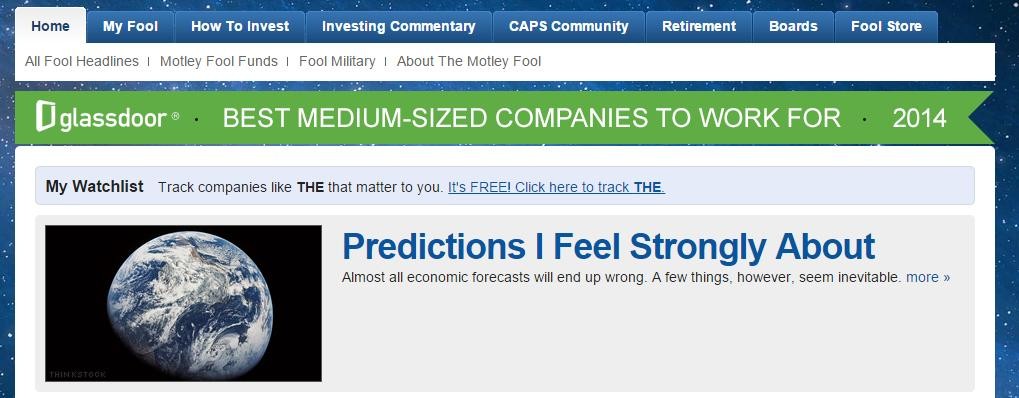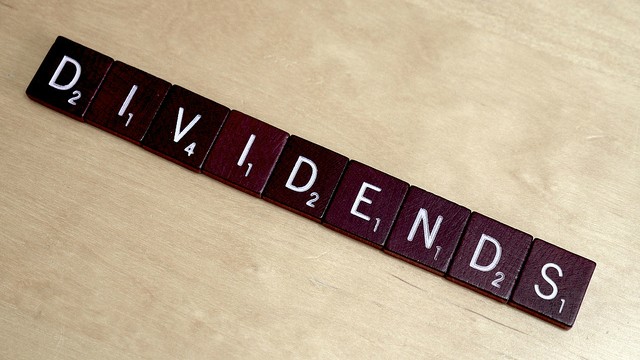The Motley Fool Getting historical on P
Post on: 3 Июнь, 2015 No Comment

ASK THE FOOL
Getting historical
Q: Where can I look up historical price-to-earnings (P/E) ratios online? — D.L., Columbus, Ind
A: It’s good to seek out such numbers, because when you compare them with a company’s recent P/E, you can get a rough sense of how overvalued or undervalued it might be. The ycharts.com website will give you several years’ worth of P/E numbers.
Our own website offers companies’ five-year high and low P/Es. To reach them, visit caps.fool.com, enter the ticker symbol in the search box near the top, and on the stock’s main page, click on Ratios.
At Morningstar.com. enter the ticker symbol to get to a company’s page, and then click on the Valuation tab. You’ll get the current P/E, the average P/E for the company’s industry, the S&P 500’s current P/E and the company’s five-year average P/E. There’s even a forward P/E that’s based on expected earnings over the coming year.
Is it a good thing to be cash-rich?
Q: Should I want to see a lot of cash on a company’s balance sheet? — C.Y. Miami.
A: It depends. When a company has gobs of greenbacks, it can act quickly when opportunities arise. But many successful companies purposefully maintain low cash balances. They use their money to pay dividends, buy back shares (essentially retiring them), and acquire other companies, among other things. If they suddenly need some cash, they draw on lines of credit.
You might be surprised at just how much cash some companies have in their coffers. Recently, for example, Google had more than $48 billion in cash and Microsoft more than $66 billion. General Electric had more than $85 billion. McDonald’s had just $2 billion, though, and Disney less than $4 billion. Companies manage their cash in different ways, with varying degrees of success.
Foolish Trivia
Name that company
Founded in 1922 and based in Bloomington, Ill. I insure more homes and cars than any other company in the United States, and I’m a top insurer in Canada, too. I was recently ranked in the top 50 of the Fortune 500. You can’t buy stock in me because I’m a mutual company, owned by my policyholders. I have more than 65,000 employees and some 17,800 agents and handle almost 35,000 claims daily, serving 81 million policy and account holders. I offer banking services and mutual funds, too. A safety advocate, I helped pass several seat belt laws. Who am I? Last w eek’s answer: Brunswick.

THE TAKE
Looking for love?
If you’re aware of lots of people looking for love on Match.com, Chemistry.com and OkCupid.com, know that there’s a publicly traded company behind them: IAC (Nasdaq: IACI).
It’s a media and Internet company with more than 20 operating businesses and more than 150 brands, which include video site Vimeo.com, Dictionary.com and CollegeHumor.com. It’s also home to the Ask.com search engine, which may be enhanced soon due to IAC’s purchase of About.com’s parent from The New York Times .
In IAC’s recent third quarter, search revenue surged 43 percent, while dating-site revenue popped 35 percent. That quarter was also the fourth in a row in which IAC trounced Wall Street analysts’ expectations. It seems that IAC’s business model is generally resistant to economic downturns.
Customers of Match.com or OkCupid.com who are searching for love are unlikely to reduce spending even if their income levels recede slightly, as is expected with the expiration of the payroll tax holiday. Meanwhile, Wall Street is forecasting IAC’s earnings-per-share growth rate to average about 28 percent over the coming five years. Its dating properties boast more than 1.7 million members.
With a forward-looking price-to-earnings (P/E) ratio of about 10, and with a 2.3 percent dividend yield, IAC seems rather attractive. (Its dividend was doubled in 2012, too.)














